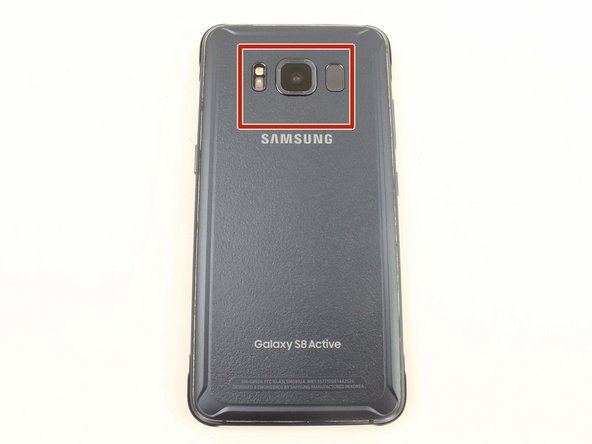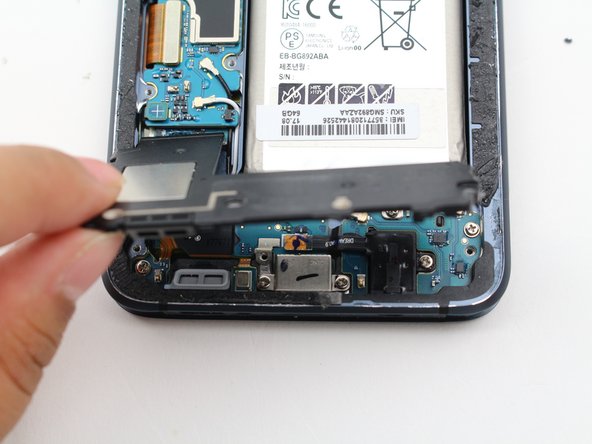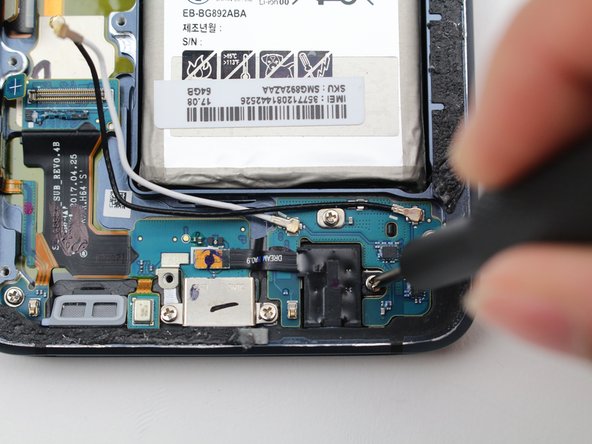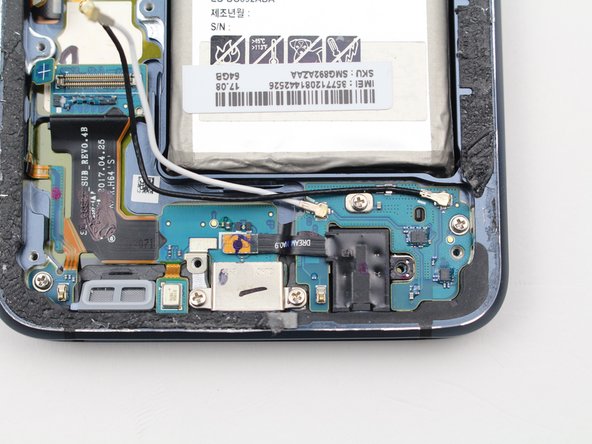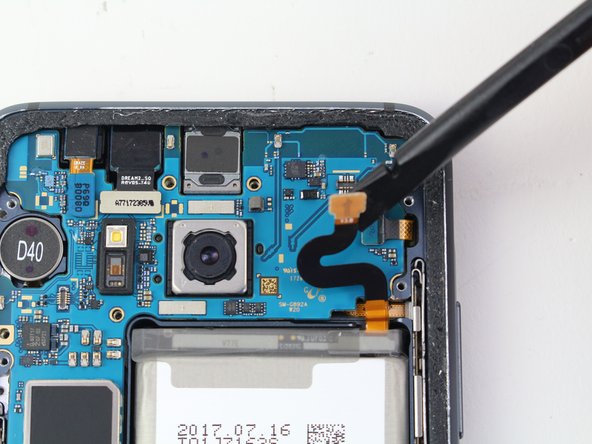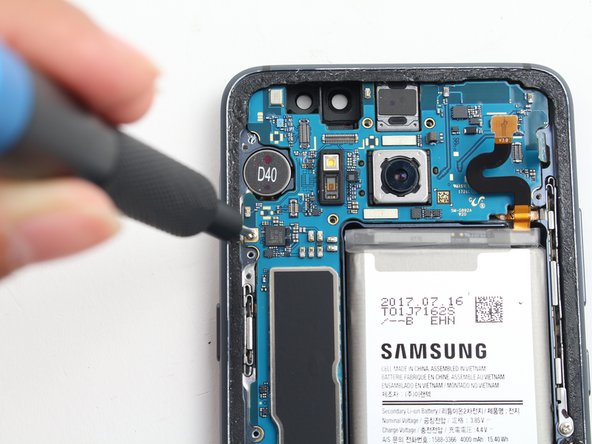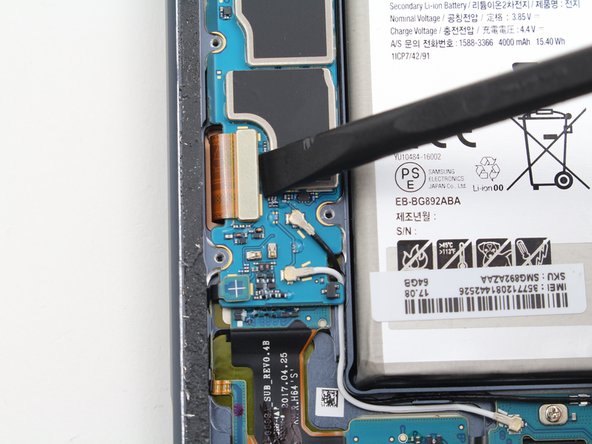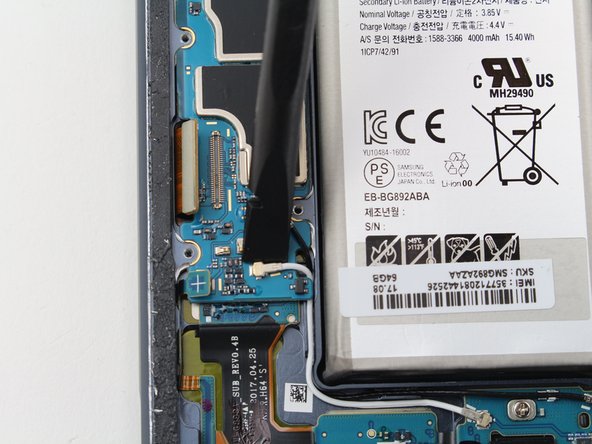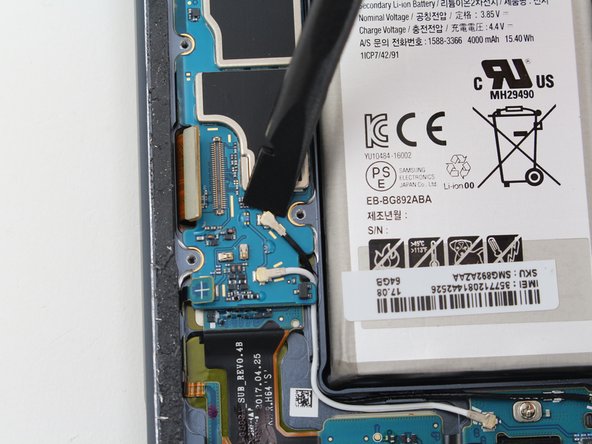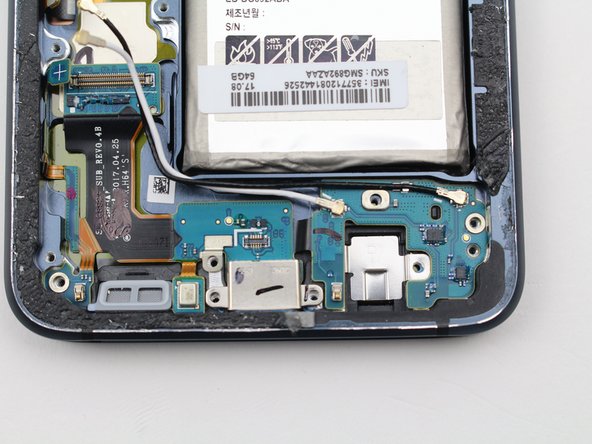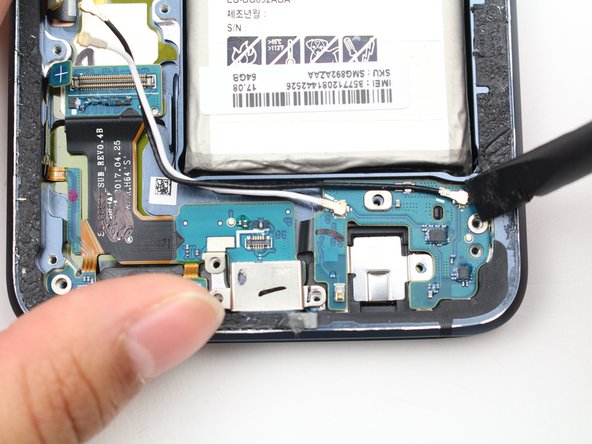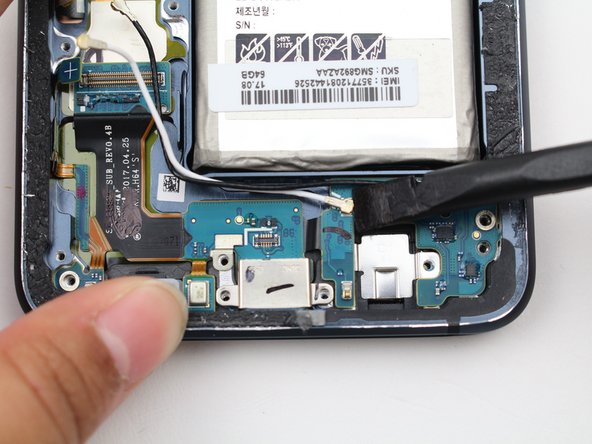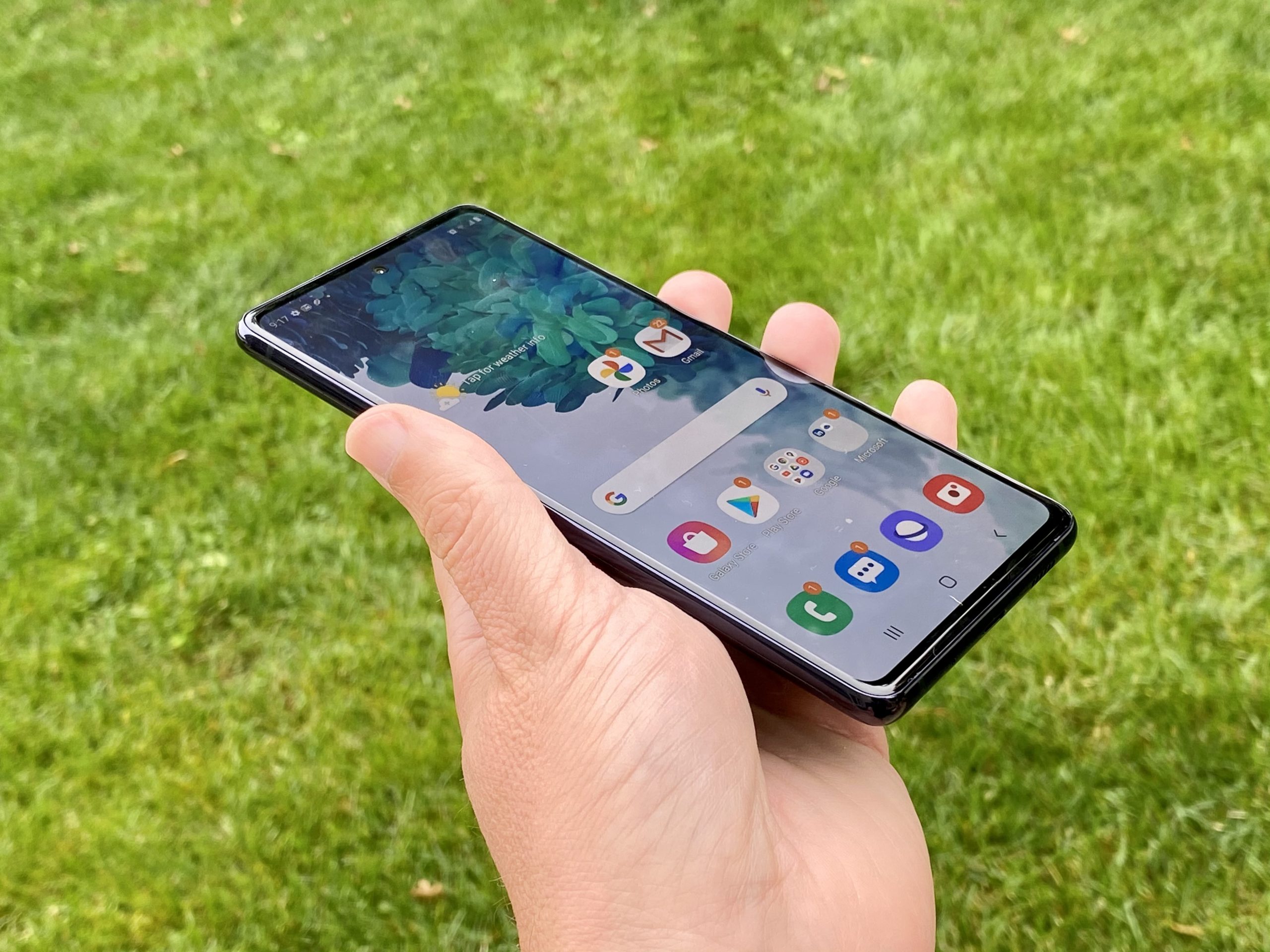Samsung Galaxy S8 Active I/O Daughterboard Replacement
Duration: 45 minutes
Steps: 24 Steps
Ready to swap out your Galaxy S8 Active’s I/O Daughterboard? This guide walks you through replacing parts like a glitchy USB-C port or a microphone that’s gone quiet. You’ll pop off the back cover, so keep some fresh adhesive handy to put it back together. Before you get started, make sure your battery’s below 25% charged—less juice means a lower chance of any fiery surprises if the battery gets poked. Let’s get started and keep things cool!
Step 1
- Grab your trusty SIM ejector tool or a straightened paperclip and gently insert it into the tiny hole on the left side at the top edge of your device. Give it a soft push to pop out the SIM tray. Carefully pull out the tray from the device. When reinserting the SIM card, make sure the gold contacts are facing up and the notched corner is at the bottom right. Gently press the SIM card into the tray, then slide the tray back into place. Need a hand? You can always schedule a repair if things get tricky.
Step 2
Popping off the back cover of your S8 Active will mess with its waterproof seals. Make sure you've got some fresh adhesive ready for reassembly, or just keep it dry if you're not replacing the adhesive right away. Safety first!
- Grab your TR6 Torx Security Screwdriver and remove the four black 3mm screws around the edges of the device that are holding the rubber bumpers in place. Then, gently peel off the rubber bumpers from the top and bottom edges of the device to get them out of the way. If you need a hand, you can always schedule a repair.
Tools Used
Step 3
- Grab your heat gun and gently warm up the edges of the back cover. This will loosen up the sticky adhesive holding the cover to the frame and make it easier to pop off.
When using a heat gun, hair dryer, or hot plate, your device's metal frame will get pretty hot—handle it with a friendly touch. Just keep an eye on the heat level; overdoing it can damage the OLED display, battery, or other internal parts. About a minute should do the trick to soften the adhesive without turning your device into a toaster. If you need help, you can always schedule a repair.
To loosen things up, you can use an iOpener, blast it with a hair dryer,IOC or warm it up on a hot plate - just be careful not to overheat.
Tools Used
Step 4
Since the back cover has a textured surface, a suction handle won’t give you much grip to lift it off. No worries—just keep at it gently or try an alternative method. If you need a hand, you can always schedule a repair.
- Slide the Jimmy tool under the edge of the back cover to get a good grip. Once it's in place, tuck an opening pick into the seam to hold it open—this keeps the gap from closing if the Jimmy slips or you need to reposition. Carefully cut around the top of the device, taking care not to damage the fingerprint sensor or camera cables. Be gentle near the top so you don’t pry into the sensor itself. Then, slide the Jimmy tool down the sides to gently loosen the adhesive and free the back cover. If you need help, you can always schedule a repair.
Tools Used
Step 5
Heads up: The fingerprint sensor cable hangs out near the top of your phone, close to the front-facing camera. When you pop off the back cover, go slow and gentle—no need for Hulk strength here! You don’t want to accidentally tear that cable.
Got replacement adhesive strips? Grab your Jimmy tool and clear away any leftover sticky bits from the frame. Neat and tidy is the name of the game!
- Grab your opening pick and gently slide it through any leftover sticky stuff to loosen it up.
- Carefully open the back cover just enough to spot the fingerprint sensor flex cable connector—no need to go all the way, just enough to see what’s what.
Tools Used
Step 6
- Gently flip the cover over and place it on top of the device like you're setting down a pancake—nice and easy.
- Pop off the fingerprint flex cable with the flat end of your spudger. Just a little lift, no superhero strength needed.
- Lift off the back cover. It should come off with a gentle tug—no wrestling required.
- When it's time to reconnect the fingerprint sensor cable, tilt the back cover so the flex cable lines up with its socket. Press straight down with the flat end of your spudger until you hear a satisfying snap.
Tools Used
Step 7
- Grab your Phillips #00 screwdriver and take out eleven 3.5 mm screws—think of it as a tiny workout for your wrist.
- Next up, remove two 2 mm screws with the same screwdriver. You're basically a pro at this by now.
Tools Used
Step 8
- Gently pop out the NFC antenna and charging coil assembly using the flat end of your spudger—like you’re flipping a pancake.
Tools Used
Step 9
- Slide the flat end of your spudger under the loudspeaker assembly and lift it out. Easy does it!
Tools Used
Step 10
- Grab your Phillips #00 screwdriver and carefully remove one 3.5 mm screw. Keep it handy—you're one step closer to the next part of the fix. If you need a hand, you can always schedule a repair.
Tools Used
Step 11
- Gently disconnect the headphone jack flex cable by prying it loose with the flat end of a spudger. Keep it careful and steady—you're doing great! If you need a hand, you can always schedule a repair.
Tools Used
Step 12
- Grab your Phillips #00 screwdriver and slide it into the headphone jack at the bottom of your device.
- Lift the screwdriver gently to pop the headphone jack out—no need to muscle it, a little nudge will do!
Tools Used
Step 13
- Gently disconnect the battery flex cable with the flat end of a spudger—think of it as giving your device a little nap time before the next step. If you need a hand, you can always schedule a repair.
Tools Used
Step 14
- Unscrew one 3.5 mm screw with your trusty Phillips #00 Screwdriver. You've got this!
Tools Used
Step 15
- Use the flat end of a spudger to gently disconnect the Volume Up, Volume Down, and Bixby button flex cable. Keep it friendly and straightforward—you're just freeing these little connectors so you can move on to the next step. Need a hand? You can always schedule a repair.
Tools Used
Step 16
- Gently detach the display flex cable using the flat end of your spudger. A little finesse goes a long way here—don't rush it.
Tools Used
Step 17
- Gently pry off the charging port flex cable using the flat end of a spudger. You've got this!
Tools Used
Step 18
- Gently detach the black and white antenna cables using the flat end of a spudger. You've got this!
Tools Used
Step 19
- The motherboard sits on top of the daughterboard, connected by a flex cable. Gently disconnect this cable using the flat end of a spudger—think of it as unplugging a tiny, delicate cord. If you need a hand with any step, you can always schedule a repair to get professional help.
Tools Used
Step 20
- Take the flat end of your spudger and set it along the top edge of the motherboard like you’re about to pull off a magic trick.
- Gently pry up the motherboard—show it some love, don’t force it—and lift it out.
Tools Used
Step 21
- Grab your Philips #00 screwdriver and take out five screws (they're 3.5 mm each). Easy does it—just keep track of those tiny guys!
Step 22
- Gently disconnect the black and white cellular antennas using the flat end of a spudger. Easy does it—just a light pry to keep everything intact. If you need a hand, you can always schedule a repair.
Tools Used
Step 23
The flex cable is gently attached to the device's frame with a bit of adhesive, so a light touch is all you need to get it free.
- Gently lift the flex cable connecting the charging port to the motherboard with the flat end of a spudger. Take your time—this step is all about finesse. If you need a hand, remember you can always schedule a repair.
Tools Used
Step 24
- Ready to put everything back together? Just reverse the steps and your device will be back in action. If you hit a snag, you can always schedule a repair for some backup.









